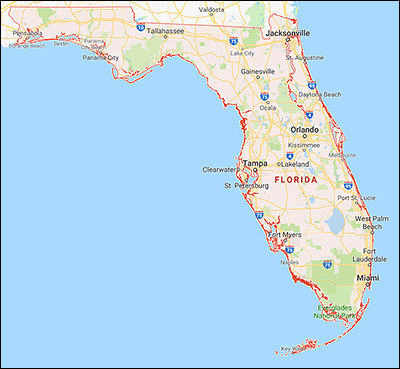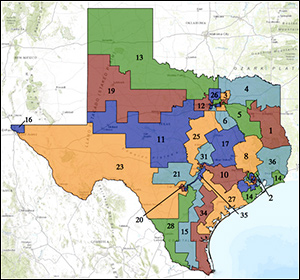All the best for a great holiday break. The Political Updates will return on Monday, Jan. 4.
By Jim EllisDec. 24, 2020 — Continuing our two-part series of examining reapportionment projections for states expected to lose congressional seats, today we look at an additional four states with CDs on the chopping block: Illinois, New York, Ohio, and Pennsylvania.
At this point, it appears a total of ten states are in the losing category. Yesterday, we covered Alabama, California, Michigan, and Minnesota. The remaining two, Rhode Island and West Virginia, are moving to at-large and two district status, respectively, meaning their new maps become obvious.
The new apportionment, originally due at the end of this year but delayed due to COVID, could be released sometime in January.
Illinois
Illinois is a sure loser and one of the few states where the overall population is less (over 158,000 people) according the latest available numbers (July 2019) than registered 10 years ago. Therefore, Illinois is in the rare situation of losing congressional representation not because the population failed to keep pace with the rate of growth, but rather due to the entity actually having fewer people.
This leads to speculation that the state could lose two seats because even in such a scenario the per district population number would be under 800,000 individuals. A two-seat loss would still render the state with a lesser per district total population figure than some of the other states losing one.
All current 18 Illinois CDs need to gain population even under a one-seat loss scenario. Making such calculations we see that the new rudimentary per district population figure would be approximately 745,401 individuals, less than the number projected for most states. Typically, states losing congressional districts feature much higher numbers. This adds to the speculation that the state could drop a second CD.
If the loss is only one, as the current projection formula suggests, the southern part of the state would appear to take the hit. This means that Republicans, while holding only five of the state’s current 18 districts, would likely lose a seat. Aside from Rep. Cheri Bustos’ (D-Moline) 17th District anchored in the Quad Cities region, which has the largest population number to gain, over 79,000 people, the remaining seven of the top eight districts needing a population increase come from the Downstate region.
The figures suggest that combining the five central and southern districts of Reps. Mike Bost (R-Murphysboro), Rodney Davis (R-Taylorville), incoming freshman Mary Miller (R), Adam Kinzinger (R-Channahon), and Darin LaHood (R-Peoria) into four districts would be the most likely scenario unless the Bustos district is collapsed. Considering that the Democrats control the redistricting process, it is probable that the former scenario would be the one adopted.
New York
Like Illinois, New York, while having slightly more people than they did in 2010 (just over 75,000 more according to July 2019 estimated figures), could be on the cusp of losing two seats. Of their current 27 districts, 24 must gain population. Only the seats of Reps. Hakeem Jeffries (D-Brooklyn), Gregory Meeks (D-Queens), and Adriano Espaillat (D-Bronx) are in the position of shedding residents. All others need a population influx even to reach the approximated 748,213 figure that appears be present at this point for a 26-District model.
As in Illinois, a two-seat loss would still keep the per district number at well under 800,000, much less than other states that are projected to lose congressional representation.
Also as in Illinois, the non-urban area looks to need the largest population gain (meaning Upstate, in this case), would contain the area most prone to lose a seat. This means, also as in Illinois, that the party in a small minority, the Republicans, is most likely the one on the chopping block.






